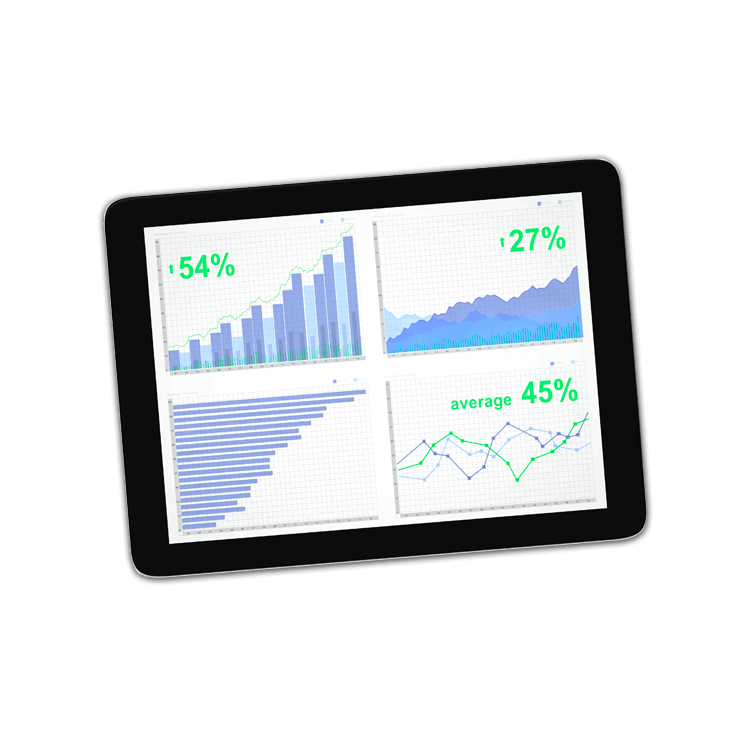According to an article by WeForum.org, the world is expected to exceed the global warming threshold between 2027 and 2042, and with mathematical models analyzing the current state of the Earth’s climate, scientists expect a temperature increase of 1.5 degrees once we reach it. Governments around the world are sounding the alarm about the need to stop a climate catastrophe that is coming and going faster than initial projections suggested. Nonetheless, new technology will play a significant role in crafting policies and developing innovations designed to address climate issues and delay our crossing the threshold. Data analysis seems to be a crucial part of solving the climate crisis before it gets worse.
Understanding data analytics
There is no denying that we live in a data-driven world. With our increasing reliance on new technologies, organizations can gather raw information about our interactions and behaviors, run models, and draw conclusions that support critical decisions. The business landscape has been using data analytics to get more information about consumer behavior so they can develop products and services tailored to specific needs. Other sectors are also using data analytics as well to solve critical problems. Law enforcement, for instance, is adopting predictive analytics tools for intelligence gathering and anticipate threats to public safety. The healthcare sector has been using data analysis to the full since the beginning of the COVID19 pandemic. Medical researchers are using insights into vaccine efficacy, virus transmission, and rate recovery to develop better action plans for the methods and processes involved in the data analytics can also help develop sustainable solutions aimed at mitigating the effects of global warming.
Where does data analytics fit in climate science?
Scientists are currently investigating how data analysis can be applied to climate research, and the basic application of this new technology is to run models and simulations based on existing factors such as sea level and the rate of its rise, melting polar ice caps, and comparing them to historical climate data. Using data analysis techniques, scientists can conduct qualitative and quantitative tests that provide accurate predictions of extreme weather conditions that can worsen over years. Recently, a study by Arizona State University and Stanford University researchers doubled down on the applicability of data analysis to identify early warning signs of severe weather patterns in the coming decades. Using previous global temperature data, the researchers were able to uncover previous warning signs of severe heat waves. Through data analytics, scientists can learn how certain actions can Accelerate or Mitigate Climate Impacts Initiatives such as building sustainable homes In the future, Texas solar buyback programs and biofuel production can reverse negative climate impacts before they get worse.
Are we too late in implementing the technology?
Tackling climate change is a race against time and requires a concerted effort to transform lifestyles, consumer habits and entire cultures, and the challenge is to put everyone in the same boat. Unfortunately, significant progress has yet to be made as certain governments are withdrawing from international climate agreements. Is introducing data analytics in the fight against global warming a delayed act? Is it too late for us to incorporate data analytics into the next sustainable solutions aimed at reversing the effects of climate change? Data Analytics may have hit the market earlier, but it’s not too late for this new technology to influence decisions about the most effective action plans. Data analytics is currently being used for specific areas that support existing climate initiatives and help expand knowledge about climate science.
1. Analyzing carbon footprints: Through the use of AI-driven solutions, companies can measure their carbon emissions accurately. From there, they can identify what needs to be done in reducing their carbon footprints and adopting sustainable solutions into the supply chain.
2. Reclaim lost ecosystems: Big data is also helping conservation efforts. Using historical data, ecologists can pinpoint areas that can be revived following long periods of drought as well as forest fire damages.
3. Promote climate awareness: Regardless of the efforts to stifle discussions on climate change from denialists, information on impending climate disasters remains solid. It’s just a matter of using data analytics to present solid evidence and educate the public.
4. Develop sustainable products: For companies that deal with sustainable production, data analysis can help develop concepts for products that reduce environmental pollution. By analyzing the relationship between material, logistics and product design with CO2 emissions, these companies can optimize their production lines and results for more sustainability.
Endnote
It’s not too late for us to harness data analytics as a way forward in addressing climate challenges. We are already on the right track to using this emerging technology to build a more sustainable future.




